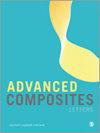Corrosion behavior of Ti/Al laminate composites as electrode of chlor-alkali electrolysis
IF 1.7
4区 材料科学
Q3 MATERIALS SCIENCE, COMPOSITES
引用次数: 1
Abstract
High-performance electrodes can solve problems of high voltage and large electricity consumption existing in chlor-alkali industry. A Ti/Al laminate composite (named as Ti/Al-LC) with three-layered structure (Ti/Al3Ti/Ti) is prepared as a new type of anode electrode for chlor-alkali electrolysis. Scanning electron microscope observation shows that the Ti/Al-LC is composited of a thicker inner layer with thickness about 700 µm and two thinner outer layers with thickness about 300 µm. From the X-ray diffraction pattern, it is known that the outer layers consisted of α-Ti and β-Ti phases, while the inner layer consisted of Al3Ti intermetallic phase. A saturated sodium chloride (NaCl) solution at 70°C is purposely chosen as the corrosion electrolyte to analyze the corrosion behavior of Ti/Al-LC as anode electrode for chlor-alkali electrolysis. Electrochemical tests, including potentiodynamic polarization and electrochemical impedance spectroscopy measurements, on a three-electrode system indicate that the Ti/Al-LC has a low corrosion rate with corrosion current density of 1.94 µA cm−2 and stable surface passive film in saturated NaCl solution at 70°C.Ti/Al复合材料作为氯碱电解电极的腐蚀行为
高性能电极可以解决氯碱工业存在的电压高、用电量大的问题。制备了一种三层结构的Ti/Al层状复合材料(Ti/Al3Ti/Ti)作为氯碱电解用新型阳极电极。扫描电镜观察表明,Ti/Al-LC由厚度约为700µm的较厚内层和厚度约为300µm的较薄外层组成。从x射线衍射图可知,外层由α-Ti和β-Ti相组成,内层由Al3Ti金属间相组成。选用70℃的饱和氯化钠溶液作为腐蚀电解质,分析Ti/Al-LC作为氯碱电解阳极电极的腐蚀行为。电化学测试(包括动电位极化和电化学阻抗谱测量)表明,在70℃饱和NaCl溶液中,Ti/Al-LC具有较低的腐蚀速率,腐蚀电流密度为1.94 μ a cm - 2,表面钝化膜稳定。
本文章由计算机程序翻译,如有差异,请以英文原文为准。
求助全文
约1分钟内获得全文
求助全文
来源期刊

Advanced Composites Letters
工程技术-材料科学:复合
自引率
0.00%
发文量
0
审稿时长
4.2 months
期刊介绍:
Advanced Composites Letters is a peer reviewed, open access journal publishing research which focuses on the field of science and engineering of advanced composite materials or structures.
 求助内容:
求助内容: 应助结果提醒方式:
应助结果提醒方式:


